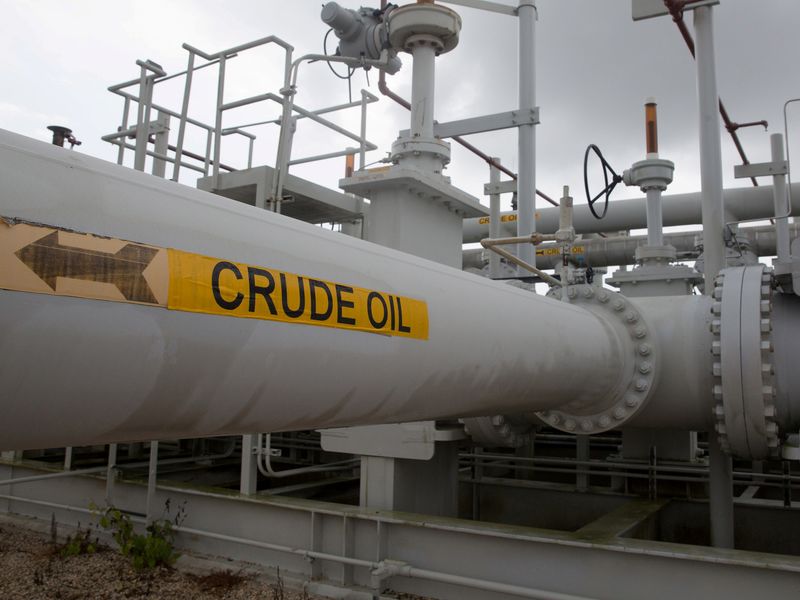By David Gaffen
(Reuters) - Energy traders bailed out of the expiring May U.S. oil futures contract in a frenzy on Monday, sending the contract to a record of almost $1 a barrel, as few buyers are willing to take delivery of actual physical barrels of oil because there is no place to put the crude.
May U.S. crude futures hit a low of $1.02 and were lately down $16.47 to $1.80 a barrel, a 90% drop.
With demand down 30% worldwide due to the coronavirus pandemic, and the main U.S. storage hub in Cushing, Oklahoma expected to fill up in a matter of weeks, very few want to be stuck with oil barrels that they have to take delivery on at some point during May. Major oil-producing nations have agreed to cut output and global oil companies are trimming production, but those cuts will not come quickly enough to avoid a massive clog.
"The cavalry (OPEC-plus cuts) won’t arrive in time to save this oil market. This may prove to be one of the worst deliveries in history. Nobody wants or is in need of oil right now," said Phil Flynn, senior market analyst at Price Futures Group in Chicago.
The difference
As a result, futures traders, who would normally be able to shift from the expiring contract to the next, are finding few buyers for the expiring May contract to take delivery of barrels. As more traders dump the May contract (CLc1), it has crashed, lately trading at less than $6 a barrel.
As of 1:43 p.m. ET (1657 GMT), the May contract (CLc1) was down to $1.80 a barrel, a 90% drop, but just 131,000 contracts had changed hands. By contrast, the June contract
"For many investors or people using these contracts for hedging this is really a big pain," said Edward Moya, market analyst at OANDA in New York. "There's no place to put it - we're running out of space to store oil."
When a futures contract expires, traders must decide whether to take delivery or roll their positions into an upcoming contract. Usually this process is relatively uncomplicated, but the May contract's decline reflects worries that too much supply could hit the markets, with shipments out of OPEC nations like Saudi Arabia booked in March set to cause a glut.
Available storage space is dropping fast at the Cushing, Oklahoma hub, where physical delivery of U.S. oil barrels bought in the futures market takes place. Four weeks ago, the storage hub was half full - now it is 69% full, according to U.S. Energy Department data.
"It’s clear that Cushing is going to fill and it will stay full for the next several months," said Andy Lipow of Lipow Oil Associates. "Because producers have been lagging in their production cuts we’re seeing an overwhelming amount of crude oil looking for a place to go around the world."
Crude stockpiles at Cushing rose 9% in the week to April 17, totaling around 61 million barrels, market analysts said, citing a Monday report from Genscape.
The world's major oil producers agreed to cut production by 9.7 million bpd in an attempt to get world supply under control as demand slumps, but those cuts do not begin until May. Saudi Arabia is ramping up deliveries of oil, including big shipments to the United States.
Worldwide oil consumption is roughly 100 million barrels a day, and supply generally stays in line with that. But consumption is down about 30% globally, and the cuts so far are far less.
U.S. exchange-traded funds are also playing a role in the action, analysts said. The U.S. Oil Fund LP (N:USO), the largest crude oil ETF, said on Thursday that it would start moving some of its assets into later-dated contracts earlier in the life of the monthly contract.

Graphic - U.S. oil futures contracts show gigantic gap: https://fingfx.thomsonreuters.com/gfx/ce/nmopaaodpab/oil%20gap.PNG